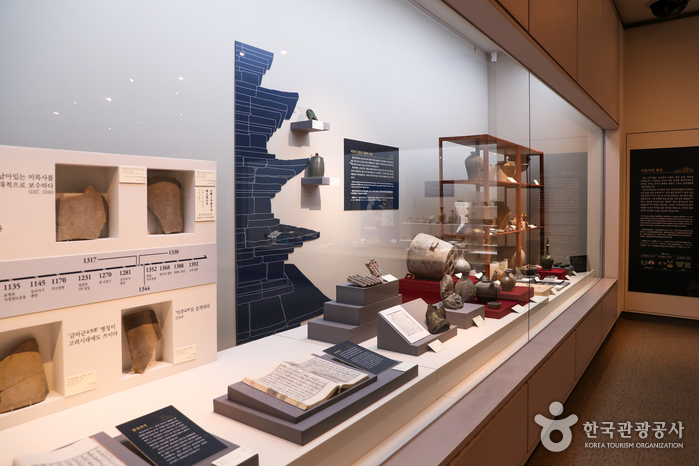Museo Nacional de Iksan (국립익산박물관)
17.9Km 2024-04-07
Mireuksaji-ro 362, Geumma-myeon, Iksan-si, Jeonbuk-do
El Museo Nacional de Iksan (antiguamente llamado Museo Mireuksaji) fue inaugurado en el año 1997 con el objetivo de conservar y difundir la cultura del reino de Baekje (18 a.c – 660 d.c). Aquí se exponen todas las reliquias descubiertas y excavadas en el solar del templo Mireuksa (Sitio Histórico), el templo más grande correspondiente a la época de Baekje.
En total cuenta con aproximadamente 19.200 reliquias históricas y culturales. Teniendo en consideración la fachada del templo, el museo se ha construido a una altura más baja, cuya construcción arquitectónica, ha tomado la misma forma que la pagoda del templo, lo que ofrece otro espectáculo para apreciar.
Las salas de exposición están clasificadas temáticamente, en la sala central, sala de historia, sala de artes budistas, etc., entre otros, y, entre las reliquias que conserva, se destaca la pagoda de piedra del templo Mireuksa, el más grande de Oriente (Tesoro Nacional), Dangganjiju del templo Mireuksa (dangganjiju es la denominación que se le daba a las columnas de piedra que se encuentran en el interior del templo budista) (Tesoro), etc.
Ruinas Históricas Mireuksaji de Iksan (익산 미륵사지) [Patrimonio Cultural de la Humanidad de la Unesco]
17.9Km 2024-04-07
Mireuksaji-ro 362, Geumma-myeon, Iksan-si, Jeonbuk-do.
+82-63-859-3873
La historia del templo Mireuksa, el mayor templo budista del reino Baekje, se menciona en el libro “Samgukyusa”: Un día, el rey Mu de Baekje iba acompañado por la reina Seonhwa en dirección al templo Sajasa en busca del monje Jimyeongbeopsa, y en un momento, en el pantano que había a su lado, aparecieron los 3 Maitreyas. El rey, para conmemorar esta aparición misteriosa, ordenó que construyeran un templo en su honor. Se dice que la construcción del templo no solo se debió a la fe de ambos reyes, sino también para expandir su influencia hacia los territorios enemigos.
Al oeste del recinto se encuentra la pagoda de piedra más antigua de Corea, designada como Tesoro Nacional Nº 11.

![Ruinas Históricas Mireuksaji de Iksan (익산 미륵사지) [Patrimonio Cultural de la Humanidad de la Unesco]](http://tong.visitkorea.or.kr/cms/resource/91/2514991_image2_1.jpg)
 Español
Español
 한국어
한국어 English
English 日本語
日本語 中文(简体)
中文(简体) Deutsch
Deutsch Français
Français Русский
Русский